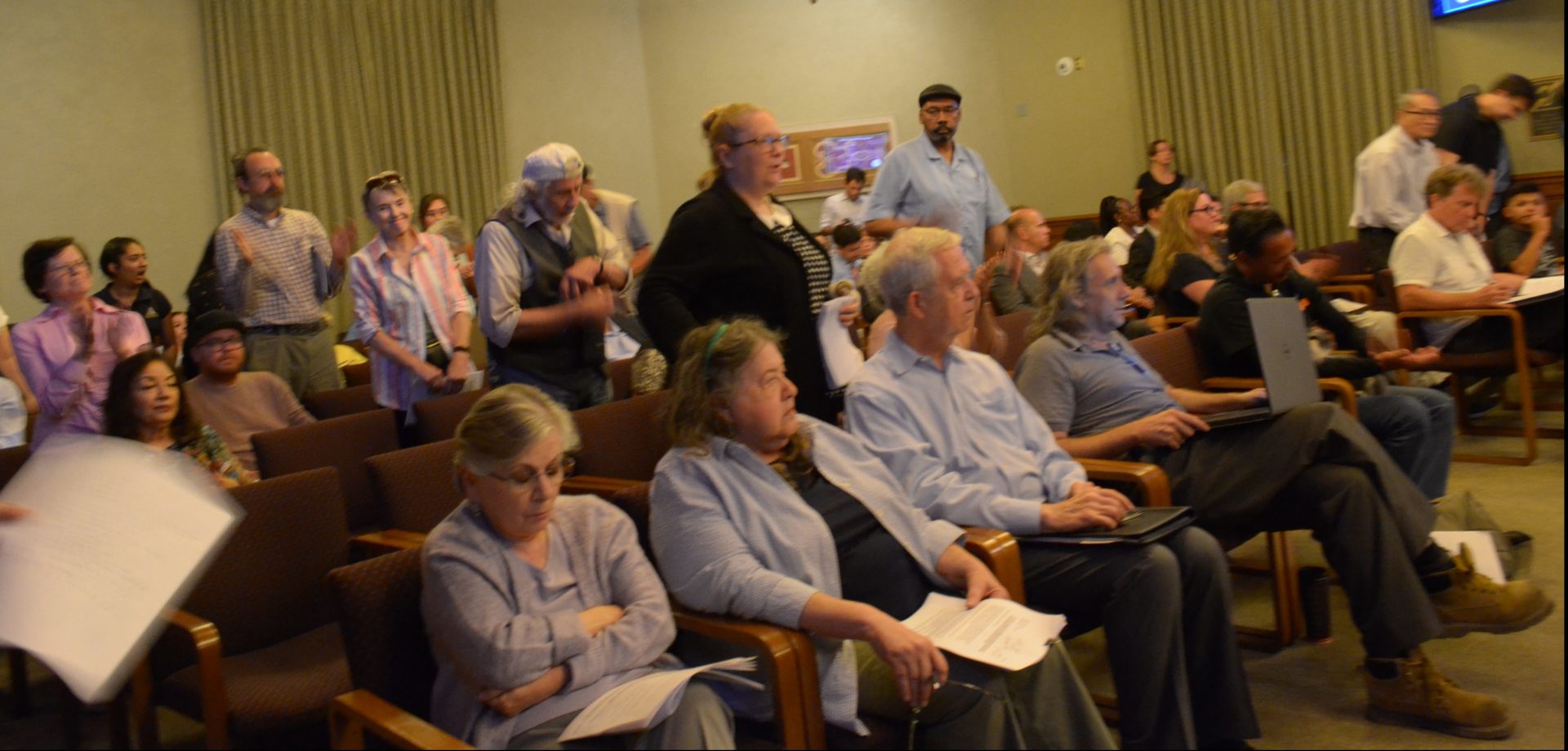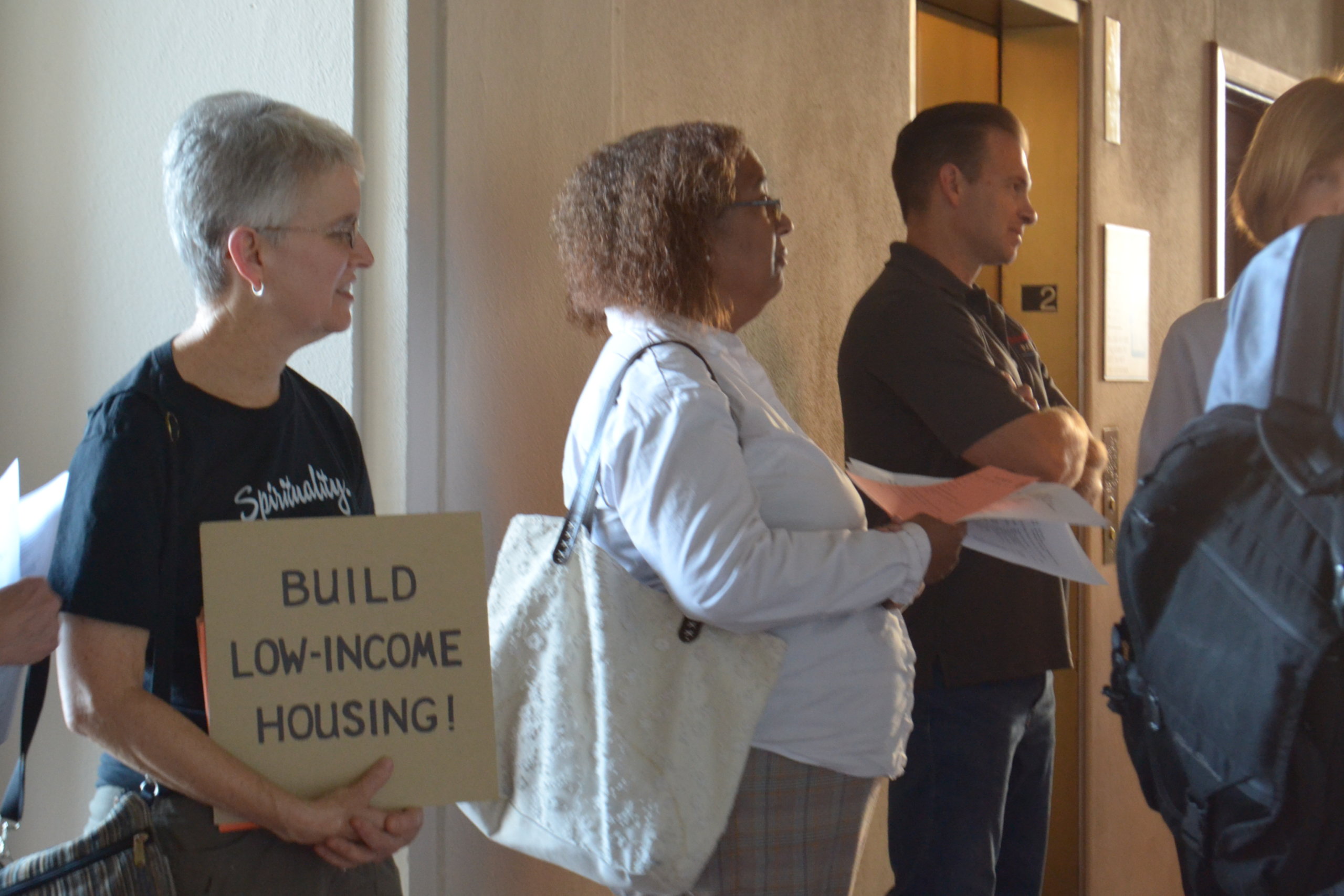 View Winners →
View Winners → Pasadena Residents Urge Council to Update Inclusionary Ordinances to Increase Affordable Housing


Local residents stand outside Pasadena City Hall as they listen to community members plea for more affordable housing in the city and anticipate council’s vote. – Photo by Alex Cordero / Beacon Media News
Was it enough?
By Alex Cordero
The public hearing sessions during the Pasadena Council meeting on Aug. 19, had the majority of local residents demanding that council members to be bold when selecting the type of recommendations set forth by the Inclusionary Zoning Working Group (IZ) to change the requirements on the Inclusionary Housing Ordinance (IHO). The IHO has not been amended by the City of Pasadena since 2001. Many residents expressed that changes to the current IHO will help improve the high demand for affordable housing in the City of Roses.
The main topic for most residents with the opportunity to address the council was to convince the council to go with the IZ recommendation of increasing affordable housing units to 25% versus the 20%recommendation from the Planning Commission. The current IHO requires only 15%.
Local resident Anne Fox, a former housing organizer for LA Voice assigned to the San Gabriel Valley area, has spent the last couple of years working with various advocates in the San Gabriel Valley to improve affordable housing by addressing government officials.
“Pasadena is a trendsetter for San Gabriel Valley, we look to you as a model of what solid affordability means and how to develop plans seriously to work with homelessness. Which means that, if we think about deciding our density levels and our mandates, if we decide on 20 to 25%, that will generally greatly encourage other cities like Alhambra, San Gabriel, and Monrovia to do more.”
She went on to present the council with data showing that other cities are currently mandating a 20% or higher for affordable housing units. “Twenty-two other cities have a mandatory set-aside rate of 20% or higher, six of those [cities] are above 25%.”
She used the city of Santa Monica as an example by briefly discussing that some areas of the city require up to 30% for set-aside units and breaking down the income levels designated to the percentage.
“This is a small approach to keep the character of our city and these changes are consistent with the equivalent policies of other ordinances in cities such as West Hollywood, San Francisco and Sonoma. And I like to advise to follow their example,” said Anthony Manousos, chair of the Homeless Housing Subcommittee of the Greater Pasadena Affordable Housing Group.
Local resident Zack Brigg reminisced about how the first inclusionary zoning requirements were originally presented to the City Council. “As I do recall 18 years ago the development community came before the City Council and said that the proposed inclusionary zoning law would kill development in Pasadena and that we [would] be killing the goose that laid the golden egg.” He went on to say that since then the City of Pasadena has experienced a building boom. “My advice is to go with the recommendation from the zoning group to increase the set-aside units to 25% and to be very weary of incentives.”
The income categories recommended by the Planning Commission that would qualify for the 20% set-aside units for affordable housing were criticized by local residents. They claim the income levels suggested do not represent the income levels of the people living in Pasadena struggling to afford the high cost of rent.
“I am a landlord and I’m a renter. And unfortunately, in Pasadena there is a housing crisis, but we [also] have a crisis of the heart. The average median income in Pasadena is $76,000.” Florence Nelson, a resident of Pasadena for the last 12 years directed the council to take another look at the income categories the Planning Commission presented. “Most of us already qualify as low income in Pasadena. So the City Council needs to decide, do you want us—the people of Pasadena? Or are we disposable?”
Many local residents were passionate about pleading and demanding that City Council do something about the opportunity being presented to improve affordable housing throughout the city.
The City Council ultimately decided to agree with the Planning Commission’s recommendation of increasing the set-aside affordable housing units to 20%. However, the ordinance will be revisited and local residents are hopeful that government officials may do more to increase affordable housing in Pasadena.







































































































